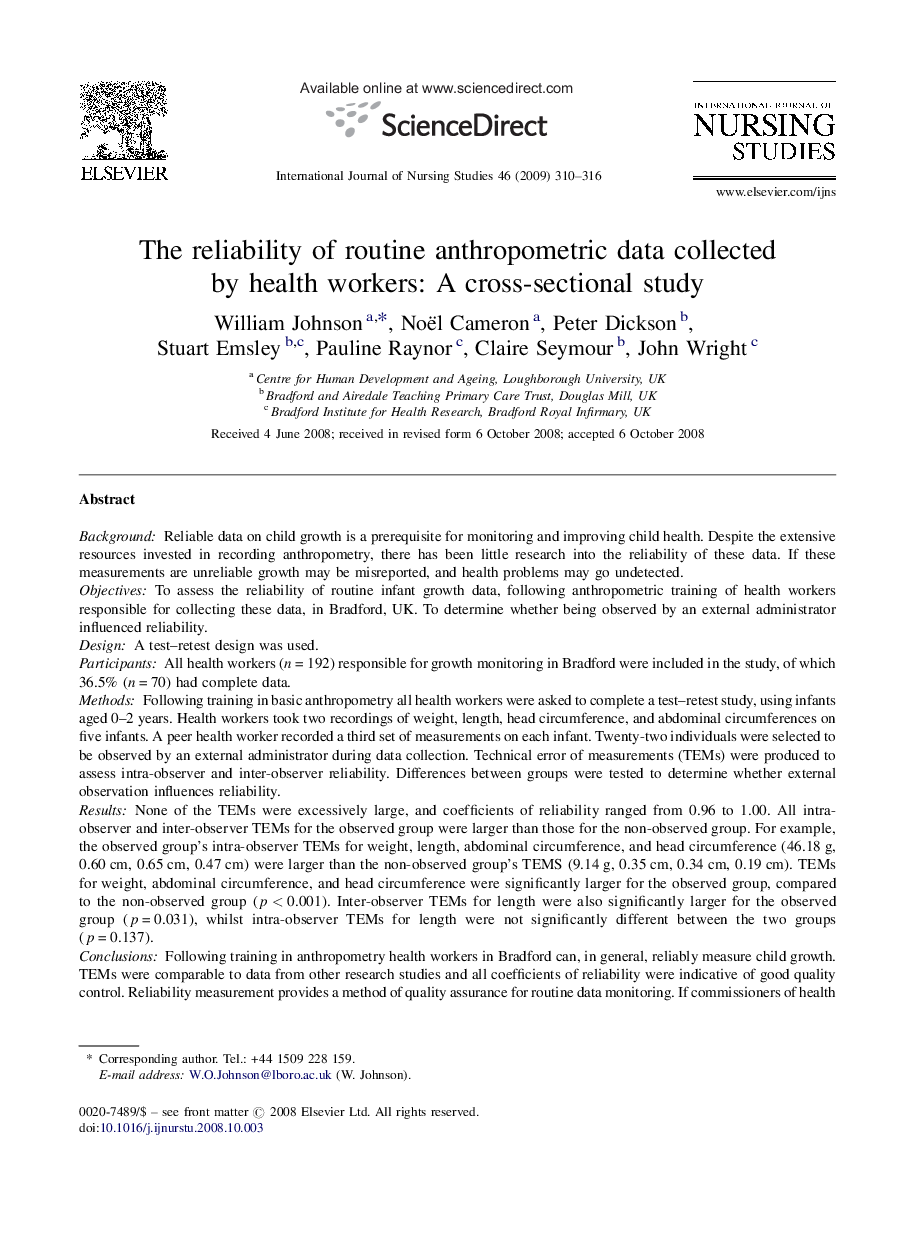| کد مقاله | کد نشریه | سال انتشار | مقاله انگلیسی | نسخه تمام متن |
|---|---|---|---|---|
| 1076649 | 1486598 | 2009 | 7 صفحه PDF | دانلود رایگان |

BackgroundReliable data on child growth is a prerequisite for monitoring and improving child health. Despite the extensive resources invested in recording anthropometry, there has been little research into the reliability of these data. If these measurements are unreliable growth may be misreported, and health problems may go undetected.ObjectivesTo assess the reliability of routine infant growth data, following anthropometric training of health workers responsible for collecting these data, in Bradford, UK. To determine whether being observed by an external administrator influenced reliability.DesignA test–retest design was used.ParticipantsAll health workers (n = 192) responsible for growth monitoring in Bradford were included in the study, of which 36.5% (n = 70) had complete data.MethodsFollowing training in basic anthropometry all health workers were asked to complete a test–retest study, using infants aged 0–2 years. Health workers took two recordings of weight, length, head circumference, and abdominal circumferences on five infants. A peer health worker recorded a third set of measurements on each infant. Twenty-two individuals were selected to be observed by an external administrator during data collection. Technical error of measurements (TEMs) were produced to assess intra-observer and inter-observer reliability. Differences between groups were tested to determine whether external observation influences reliability.ResultsNone of the TEMs were excessively large, and coefficients of reliability ranged from 0.96 to 1.00. All intra-observer and inter-observer TEMs for the observed group were larger than those for the non-observed group. For example, the observed group’s intra-observer TEMs for weight, length, abdominal circumference, and head circumference (46.18 g, 0.60 cm, 0.65 cm, 0.47 cm) were larger than the non-observed group’s TEMS (9.14 g, 0.35 cm, 0.34 cm, 0.19 cm). TEMs for weight, abdominal circumference, and head circumference were significantly larger for the observed group, compared to the non-observed group (p < 0.001). Inter-observer TEMs for length were also significantly larger for the observed group (p = 0.031), whilst intra-observer TEMs for length were not significantly different between the two groups (p = 0.137).ConclusionsFollowing training in anthropometry health workers in Bradford can, in general, reliably measure child growth. TEMs were comparable to data from other research studies and all coefficients of reliability were indicative of good quality control. Reliability measurement provides a method of quality assurance for routine data monitoring. If commissioners of health services are to be informed by these data then some form of reliability assessment should be considered, and if employed external observation is recommended to improve validity.
Journal: International Journal of Nursing Studies - Volume 46, Issue 3, March 2009, Pages 310–316